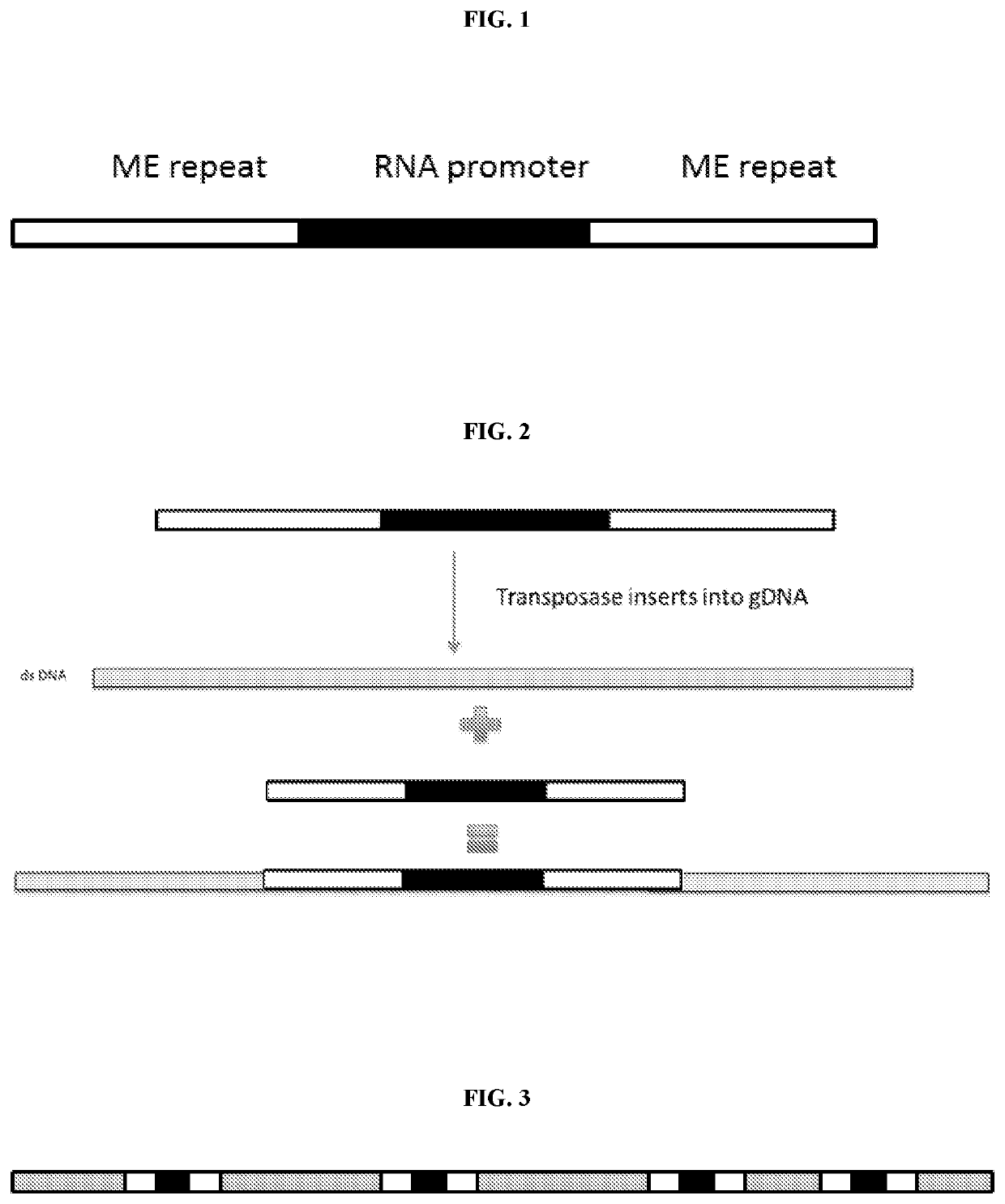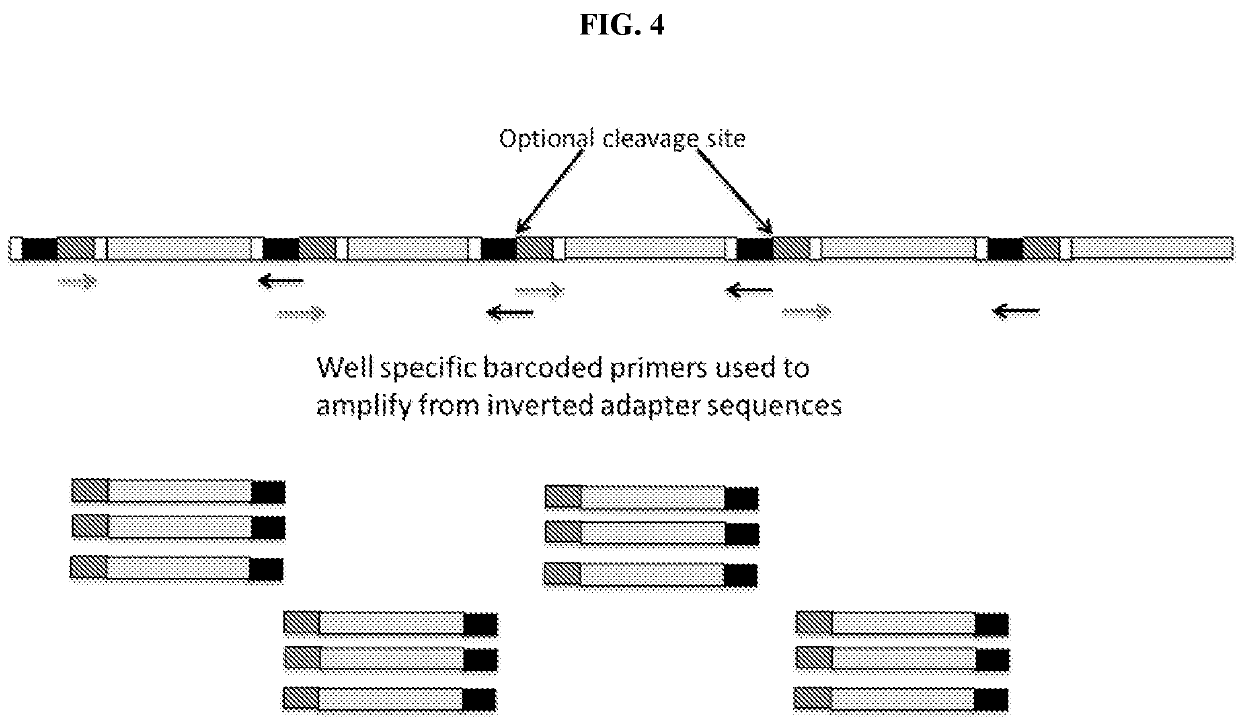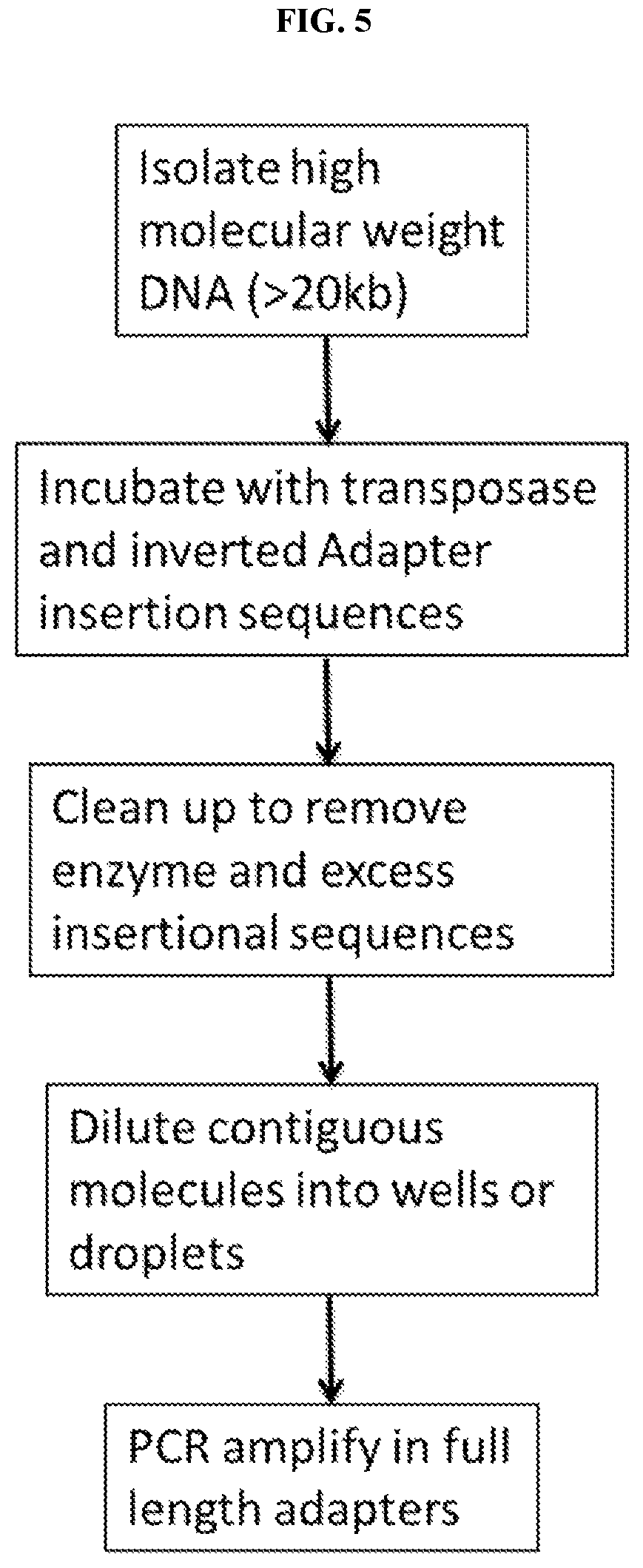Methods and compositions for sequencing
a technology of compositions and methods, applied in the field of methods and compositions for sequencing, can solve the problems of not amplifying not propagating, and errors that may be introduced in the synthesis of a particular library intermediate rna molecule, so as to reduce gc bias, avoid synthesis bias, sequence easily and more accurately
- Summary
- Abstract
- Description
- Claims
- Application Information
AI Technical Summary
Benefits of technology
Problems solved by technology
Method used
Image
Examples
embodiment 1
2. The method of embodiment 1, wherein the repeat site comprises a position within a repetitive element.
3. The method of embodiment 1, wherein the region comprises a locus of a genome that harbors a repeat site.
4. The method of embodiment 1, comprising assigning the second sequence read comprising repetitive element sequence spanning the repeat site to the second region.
5. The method of embodiment 1, wherein the nucleic acid tag comprises RNA promoter sequence.
embodiment 5
6. The method of embodiment 5, wherein the RNA promoter sequence comprises at least one of a T7, T3, T7lac, SP6, pL, CMV, SV40, CaMV35S, araBAD, trp, lac, Ptac, pol I, pol II, pol III, EF1a, PGK1, Ubc, beta actin, CAG, TRE, UAS, Ac5, Polyhedrin, CaMKIIa, ALB, GAL1, GAL10, TEF1, GDS, ADH1, Ubi, H1, and U6.
7. The method of embodiment 5, wherein the RNA promoter sequence comprises T7 sequence.
8. The method of embodiment 1, comprising inserting a nucleic acid tag having a nucleic acid tag sequence into a second site in the element at a second region.
embodiment 8
9. The method of embodiment 8, comprising assigning a third sequence read comprising repetitive element sequence and comprising nucleic acid tag sequence at the second site to the second region.
10. The method embodiment 1, comprising inserting at least two nucleic acid tags having nucleic acid tag sequences into at least two sites in the element at two or more regions at an average density of no more than 1 insertion per 500 basepairs.
11. A method of converting a multimeric repeat nucleic acid region that is not uniquely sequenceable into a unique region, comprising
a) treating the isolated nucleic acid sample comprising a repeated nucleic acid region that is not uniquely sequenceable a using a random insertional mutagen to insert a tag into one copy of said repeated nucleic acid region, thereby rendering said one copy of said repeated nucleic acid region unique,
b) obtaining sequence reads from the insertionally mutagenized isolated nucleic acid sample, and
c) assigning sequence reads...
PUM
| Property | Measurement | Unit |
|---|---|---|
| Tm | aaaaa | aaaaa |
| volume | aaaaa | aaaaa |
| volume | aaaaa | aaaaa |
Abstract
Description
Claims
Application Information
 Login to View More
Login to View More - R&D
- Intellectual Property
- Life Sciences
- Materials
- Tech Scout
- Unparalleled Data Quality
- Higher Quality Content
- 60% Fewer Hallucinations
Browse by: Latest US Patents, China's latest patents, Technical Efficacy Thesaurus, Application Domain, Technology Topic, Popular Technical Reports.
© 2025 PatSnap. All rights reserved.Legal|Privacy policy|Modern Slavery Act Transparency Statement|Sitemap|About US| Contact US: help@patsnap.com



